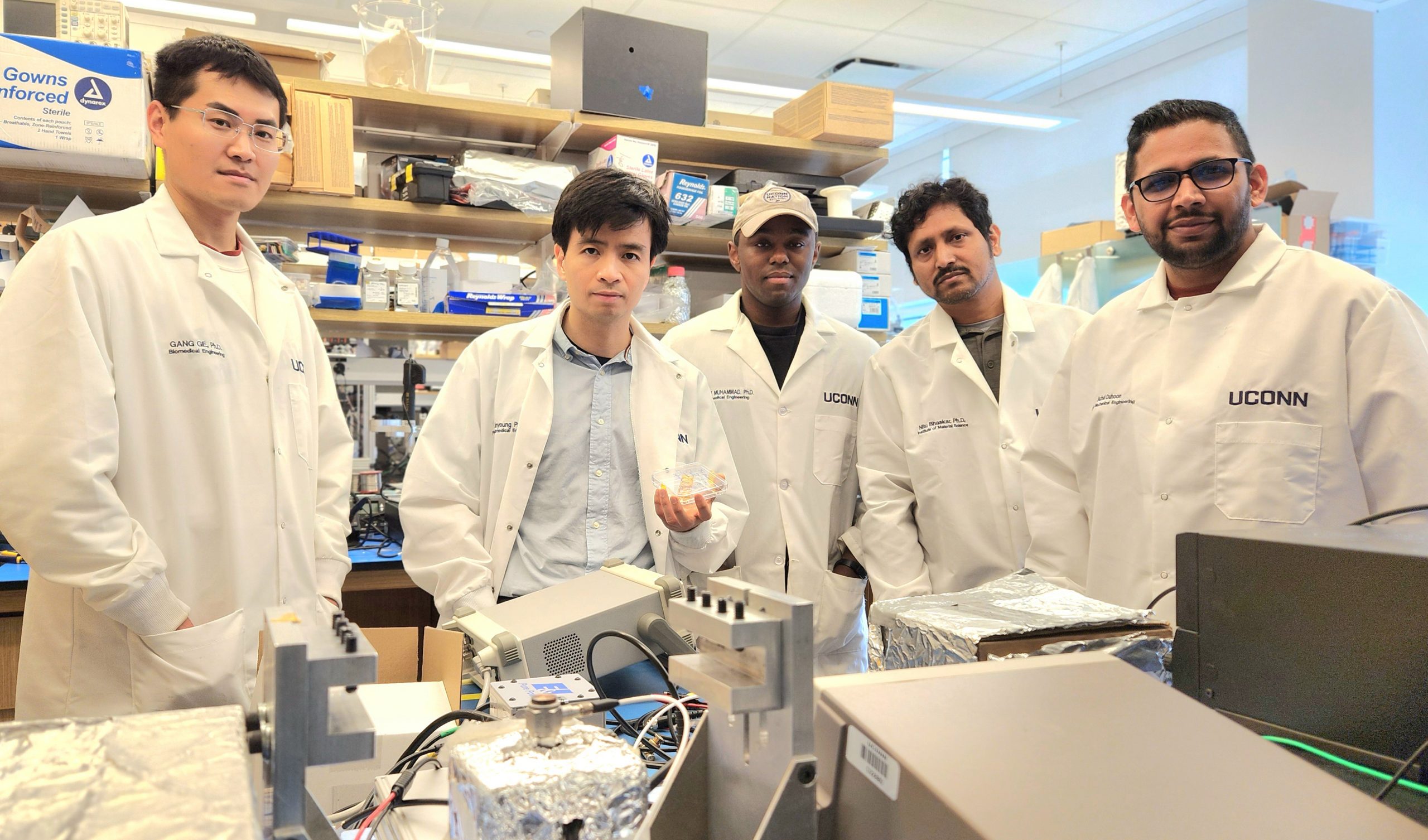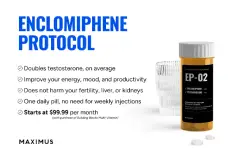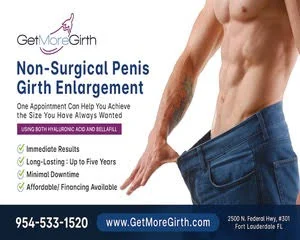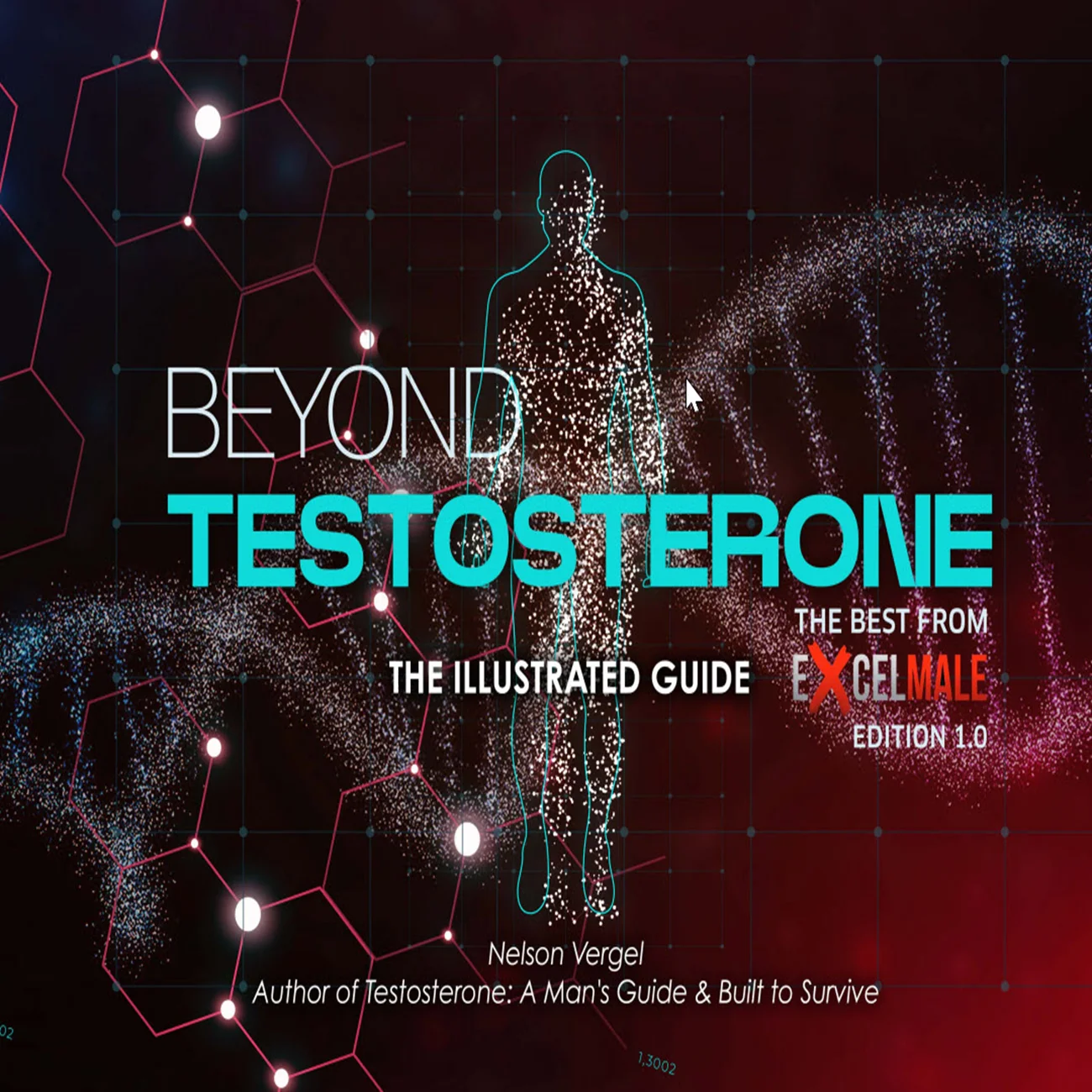madman
Super Moderator
* At the University of Connecticut, a research team led by Thanh Nguyen, associate professor of mechanical engineering and biomedical engineering, believes the future of joint repair might lie in a tiny electrical spark—and a simple injection.
* The innovation harnesses the body’s natural bioelectric signals to promote healing. The injectable gel contains a piezoelectric scaffold—a composite made from biodegradable poly-L-lactic acid (PLLA) nanofibers and magnesium oxide nanoparticles. When subjected to mechanical stress—such as joint movement or ultrasound—this scaffold generates small electrical charges.
* These mimic the body’s natural electrical cues that guide tissue development and repair.
* “We’re building hope for people who’ve been told their only option is a joint replacement,” he says.

 today.uconn.edu
today.uconn.edu
Backed by a $2.3M grant from the NIH and NIH/NIBIB, Thanh Nguyen will stimulate cartilage regeneration in large animal models

Millions of Americans suffer from osteoarthritis, a painful joint disease that wears down cartilage and can severely impact mobility. Pain medications only mask symptoms, and surgical option carry risks of infection and immune rejection.
At the University of Connecticut, a research team led by Thanh Nguyen, associate professor of mechanical engineering and biomedical engineering, believes the future of joint repair might lie in a tiny electrical spark—and a simple injection.
Backed by a $2.3M grant from the National Institutes of Health (NIH) and National Institute of Biomedical Imaging and Bioengineering (NIBIB), Nguyen and his team are developing an injectable hydrogel designed to stimulate cartilage regeneration in large animal models.
“With current treatments, we’re managing the pain, not healing the tissue,” says Nguyen. “We’re hoping that the body’s own mechanical movements—like walking—can generate tiny electrical signals that encourage cartilage to grow back.”
The innovation harnesses the body’s natural bioelectric signals to promote healing. The injectable gel contains a piezoelectric scaffold—a composite made from biodegradable poly-L-lactic acid (PLLA) nanofibers and magnesium oxide nanoparticles. When subjected to mechanical stress—such as joint movement or ultrasound—this scaffold generates small electrical charges.
These mimic the body’s natural electrical cues that guide tissue development and repair.
“By delivering these signals directly to damaged areas, the scaffold can stimulate cell activity and encourage the regeneration of strong, durable cartilage, particularly in high-load joints like the knees and hips,” Nguyen says. “This method also is cell-free and drug-free, a major advantage over traditional regenerative therapies that often require lab-grown stem cells.”
The new grant-funded study, titled “Injectable Cell-Free Piezoelectric Scaffold to Treat Osteoarthritis in Large Animal Models,” will run through 2029. It’s based on two previous studies by Nguyen, his former postdoctoral fellow Yang Liu (now a professor at Peking University, China) and his former student Tra Vinikoor ’24 Ph.D. (now an advisor at the federal Food and Drug Administration). In these studies, the team injected the gel into the knees of rabbits with damaged cartilage, and within two months, saw re-formed, functional cartilage in the animals’ knees.
Their work was published in the top medical journals of Science Translational Medicine and Nature Communication. (See previous UConn Today articles: Regrowing Cartilage in a Damaged Knee Gets Closer to Fixing Arthritis and Gel Repairs Cartilage Without Surgery, With Electricity)
Over the next four years, Nguyen’s team will test the gel’s effectiveness in large animal models, a key step before human clinical trials. Along with four other active NIH Research Project (RO1) grants funding Nguyen’s work with piezoelectric biomaterials, the group hopes that the result of this project will successfully demonstrate that a single injection, followed by brief external ultrasound sessions, can significantly restore cartilage function in severe osteoarthritis cases.
Nguyen’s research is highly interdisciplinary and at the interface of biomaterials, nano/micro-technology, and medicine. He credits the project’s progress to a “deeply collaborative” environment at UConn, where engineering and biomedical science intersect in innovative ways.
The NIH/NIBIB grant is the fourth grant Nguyen received in FY25. Others include: “MAP Technology for Single-Admin and Co-Delivery of Polio and Other Vxs,” supported by a $4M grant from the Gates Foundation; “Bionic Self-Charged Bone Composite Scaffold,” supported by a $2.1 award from NIH/NIBIB; and “Advancing Multi-bNAbs Microneedle Patch Technology For HIV-1 Prevention in Breastfeeding Infants,” supported by a $1.5M grant from NIH/National Institute of Allergy and Infectious Diseases.
In addition, Nguyen served as the Materials Research Society’s Early Career Distinguished Presenter at the organization’s meeting in 2025. He spoke about his work on “Current Advances of Biodegradable and Biocompatible nanofiber-based materials for tissue engineering and drug delivery.”
“We’re building hope for people who’ve been told their only option is a joint replacement,” he says.
* The innovation harnesses the body’s natural bioelectric signals to promote healing. The injectable gel contains a piezoelectric scaffold—a composite made from biodegradable poly-L-lactic acid (PLLA) nanofibers and magnesium oxide nanoparticles. When subjected to mechanical stress—such as joint movement or ultrasound—this scaffold generates small electrical charges.
* These mimic the body’s natural electrical cues that guide tissue development and repair.
* “We’re building hope for people who’ve been told their only option is a joint replacement,” he says.

Nguyen's Injectable Piezoelectric Gel Could Treat Osteoarthritis without Surgery - UConn Today
Backed by a $2.3M grant from the NIH and NIH/NIBIB, Thanh Nguyen will stimulate cartilage regeneration in large animal models
Backed by a $2.3M grant from the NIH and NIH/NIBIB, Thanh Nguyen will stimulate cartilage regeneration in large animal models
Millions of Americans suffer from osteoarthritis, a painful joint disease that wears down cartilage and can severely impact mobility. Pain medications only mask symptoms, and surgical option carry risks of infection and immune rejection.
At the University of Connecticut, a research team led by Thanh Nguyen, associate professor of mechanical engineering and biomedical engineering, believes the future of joint repair might lie in a tiny electrical spark—and a simple injection.
Backed by a $2.3M grant from the National Institutes of Health (NIH) and National Institute of Biomedical Imaging and Bioengineering (NIBIB), Nguyen and his team are developing an injectable hydrogel designed to stimulate cartilage regeneration in large animal models.
“With current treatments, we’re managing the pain, not healing the tissue,” says Nguyen. “We’re hoping that the body’s own mechanical movements—like walking—can generate tiny electrical signals that encourage cartilage to grow back.”
The innovation harnesses the body’s natural bioelectric signals to promote healing. The injectable gel contains a piezoelectric scaffold—a composite made from biodegradable poly-L-lactic acid (PLLA) nanofibers and magnesium oxide nanoparticles. When subjected to mechanical stress—such as joint movement or ultrasound—this scaffold generates small electrical charges.
These mimic the body’s natural electrical cues that guide tissue development and repair.
“By delivering these signals directly to damaged areas, the scaffold can stimulate cell activity and encourage the regeneration of strong, durable cartilage, particularly in high-load joints like the knees and hips,” Nguyen says. “This method also is cell-free and drug-free, a major advantage over traditional regenerative therapies that often require lab-grown stem cells.”
The new grant-funded study, titled “Injectable Cell-Free Piezoelectric Scaffold to Treat Osteoarthritis in Large Animal Models,” will run through 2029. It’s based on two previous studies by Nguyen, his former postdoctoral fellow Yang Liu (now a professor at Peking University, China) and his former student Tra Vinikoor ’24 Ph.D. (now an advisor at the federal Food and Drug Administration). In these studies, the team injected the gel into the knees of rabbits with damaged cartilage, and within two months, saw re-formed, functional cartilage in the animals’ knees.
Their work was published in the top medical journals of Science Translational Medicine and Nature Communication. (See previous UConn Today articles: Regrowing Cartilage in a Damaged Knee Gets Closer to Fixing Arthritis and Gel Repairs Cartilage Without Surgery, With Electricity)
Over the next four years, Nguyen’s team will test the gel’s effectiveness in large animal models, a key step before human clinical trials. Along with four other active NIH Research Project (RO1) grants funding Nguyen’s work with piezoelectric biomaterials, the group hopes that the result of this project will successfully demonstrate that a single injection, followed by brief external ultrasound sessions, can significantly restore cartilage function in severe osteoarthritis cases.
Nguyen’s research is highly interdisciplinary and at the interface of biomaterials, nano/micro-technology, and medicine. He credits the project’s progress to a “deeply collaborative” environment at UConn, where engineering and biomedical science intersect in innovative ways.
The NIH/NIBIB grant is the fourth grant Nguyen received in FY25. Others include: “MAP Technology for Single-Admin and Co-Delivery of Polio and Other Vxs,” supported by a $4M grant from the Gates Foundation; “Bionic Self-Charged Bone Composite Scaffold,” supported by a $2.1 award from NIH/NIBIB; and “Advancing Multi-bNAbs Microneedle Patch Technology For HIV-1 Prevention in Breastfeeding Infants,” supported by a $1.5M grant from NIH/National Institute of Allergy and Infectious Diseases.
In addition, Nguyen served as the Materials Research Society’s Early Career Distinguished Presenter at the organization’s meeting in 2025. He spoke about his work on “Current Advances of Biodegradable and Biocompatible nanofiber-based materials for tissue engineering and drug delivery.”
“We’re building hope for people who’ve been told their only option is a joint replacement,” he says.












